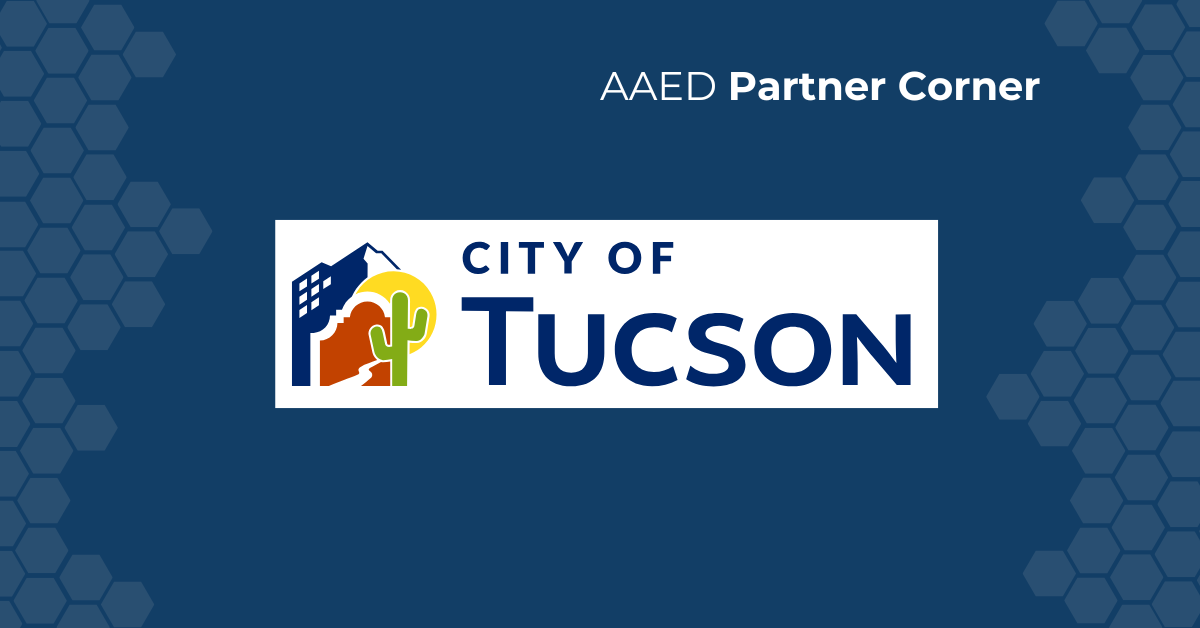Tucson’s Strategic Growth: Leveraging Industry Clusters and State Trust Lands for a Thriving Future
Aerospace and defense is Tucson’s leading industry cluster. Complimenting that strength are growing industrial clusters in renewable energy and natural resources, photonics and optics, and the life sciences. Companies such as American Battery Factory, Belden, and Sion Power have all recently committed to expansion in the area. The City of Tucson Office of Economic Initiatives is actively engaged in long-term strategic planning to attract industrial investment and facilitate job creation in areas that have been identified as suitable for future growth and development.
Affordable land continues to drive economic growth in Tucson. Companies looking to expand or relocate to Tucson will find greenfield development opportunities across more than 10,000 acres of State Trust Lands previously annexed into the City and identified for future population growth and economic development. The City of Tucson and the Arizona State Land Department (ASLD) have established a strong working relationship to plan and entitle State Trust Lands within the City. In the past six years, four significant zoning entitlements have been adopted to facilitate residential, commercial, and industrial growth on State Land.
Adopted in 2019, Atterbury Trails is the first example of a Planned Community Development (PCD) entitlement in Tucson. Located east of the famous “Boneyard,” also known as the Air Force 309th Aerospace Maintenance and Regeneration Group, the initial phases of single- and multi-family residential housing have already been developed. The PCD provides a high-level “master plan” for the long-term development of the 2,590 acre site and creates a predictable development path for future owners as blocks are brought to auction by the State Land Department. Future owners will be responsible for more detailed planning and engineering of individual development blocks; however, if designed in conformance with the PCD, no further discretionary approvals will be required.
The H2K Planned Area Development (PAD) is 2,462 contiguous acres fronting Interstate 10. City entitlements, drafted in close coordination with the Arizona State Land Department, will accommodate large-scale facilities and are intended for industrial and advanced manufacturing users in Tucson’s key industry clusters. Served by Tucson Water and Tucson Electric Power, H2K is located 15 minutes from Tucson International Airport and features direct access to Interstate 10 via the recently constructed Houghton Road interchange. The Union Pacific main line parallels the site, and the City has secured approval for a new rail spur to serve H2K. Similar to Atterbury Trails, no further discretionary approvals will be required for development that meets the intent of the approved PAD.

The Larrea PAD and Escalera PADs together comprise nearly 800 acres of State Trust Land entitled primarily for residential uses. The PAD zoning tool allowed the City to specify and accommodate a variety of residential densities and housing types, as well as ensure the incorporation of commercial services, employment opportunities, and open space. The PAD also sets developer expectations regarding required public infrastructure improvements, and the review and permitting process. The Larrea and Escalera PADs are currently in development and have contributed to the area around Interstate 10, between Alvernon and Wilmot, becoming one of the fastest-growing submarkets in the Tucson metro area.
Following this success, the City of Tucson and the Arizona State Land Department are currently creating the greatest opportunity yet: the Rita-10 Planned Community Development. South of Interstate 10, between the University of Arizona Tech Park and the Pima County Fairgrounds, lies 8,800 acres of State Trust Land identified as “future growth area” in the City’s General Plan. The Rita-10 PCD is intended to provide zoning entitlements and a predictable development path for long-term residential and commercial growth. Different from the Atterbury Trails PCD, portions of Rita-10 have been identified as suitable for large-scale industrial and advanced manufacturing uses. The City of Tucson Mayor and Council are expected to consider the Rita-10 PCD in 2025, setting the stage for continued growth in Tucson’s key industry clusters.

